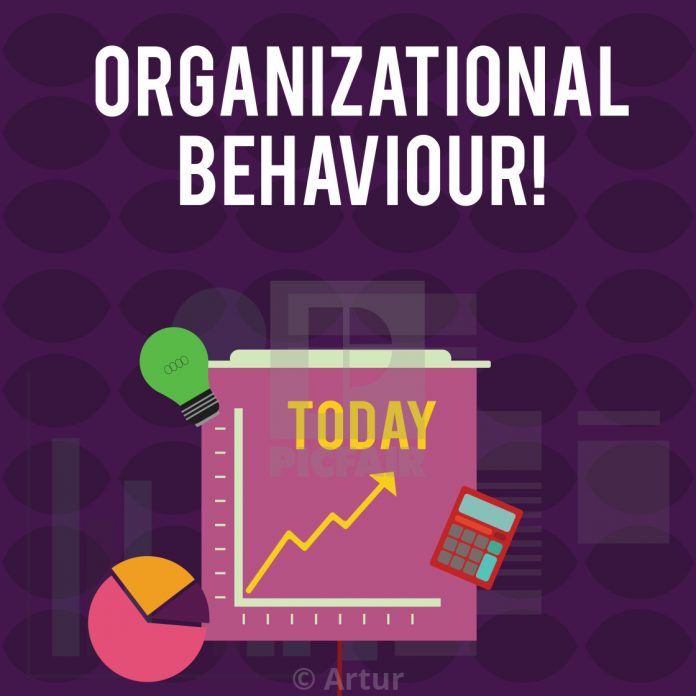|
|||||||||||||||||||||||||||||||||||||||||||||||||||||||||||||||||||||||||||||||||||||||||||||||||||
|
HOT JOBS IN EVANSVILLE
Adopt A Pet
Kat is a super pretty 2-year-old female black Lab mix! She loves to go on walks for the VHS Mutt’s Morning Out program. Kat was transferred to VHS from Evansville Animal Care & Control when VHS had extra kennel space. Her adoption fee is $110 and includes her spay, microchip, vaccines, and more. Get details atwww.vhslifesaver.org/adopt!
view all articlesMultiple Suspects in Custody after Rifles Stolen from West Side Home
The Vanderburgh County Sheriff’s Office has arrested one adult and three juveniles on charges related to the theft of multiple rifles taken during a west side residential burglary.
On Wednesday, October 21, 2020 at 3:25 PM, the Sheriff’s Office responded to a report of a residential burglary in progress in western Vanderburgh County. The homeowner, who was not at the residence, had been contacted by neighbors who reported seeing several masked males exiting his home carrying rifles. The neighbors suspected that the home was being burglarized. The homeowner confirmed that a burglary was indeed occurring and called 911. Once deputies arrived and secured the scene, the homeowner was able to determine that four AR-15 style rifles and two Airsoft pistols had been stolen. The Airsoft pistols were manufactured to weigh and appear like real handguns. The investigation later revealed that the suspects thought they were actual firearms.
Detectives with the Vanderburgh County Sheriff’s Office began an investigation and processed the crime scene. A special agent with the Bureau of Alcohol, Tobacco, Firearms and Explosives (ATF) as well as members of the Evansville Police Department, Indiana State Police and the US Marshals Service assigned to the US Marshals Fugitive Task Force assisted with the effort to locate the suspects and recover the firearms. Time was a factor, as investigators feared the firearms could be used in the commission of further crimes resulting in possible injury or death. Stolen firearms are commonly moved from person to person quickly, which makes recovery difficult if not impossible. Stolen firearms are often recovered only after being used in the commission of another crime.
The homeowner had installed surveillance cameras inside and outside the residence. The footage revealed two males entered the residence and while at least one other person involved did not enter. Identification was not possible due to both suspects wearing COVID 19 style masks. The footage did reveal that a delivery vehicle had passed by the residence during the burglary. Investigators located the driver, who had noted the suspicious activity and took care to remember important details. Information provided by the driver led to the identification of the vehicle used by burglary suspects. The owner of that vehicle, Derrick Bradley, was later located, detained and interviewed. He implicated himself in the burglary and admitted to possessing one of the stolen rifles. The rifle was later recovered from his vehicle following the execution of a search warrant. Bradley was initially arrested on a charge of Burglary. After a check of his criminal history revealed a previous conviction for Burglary a Class B Felony in April of 2002, a charge of Serious Violent Felon in Possession of a Firearm was added.
The investigation progressed into the early morning hours of October 22 with the arrest of a fifteen year-old juvenile male, taken into custody at his residence. The juvenile cooperated and admitted to taking part in the burglary. A second rifle was recovered as were two handguns not related to this burglary. One of the handguns had been reported stolen out of Owensboro, KY. Further investigation led to other sixteen year-old males, who both confessed to involvement in the burglary. Additional information was obtained that led detectives to recover the remaining two rifles.
Derrick Bradley was placed in the Vanderburgh County Jail where he will remain without bond pending a court appearance. The juveniles were transported to a secure juvenile detention facility and will be held pending a hearing. The juveniles advised that once they realized the Airsoft guns were not actual firearms, they threw them away.
ARRESTED:
Derrick Dewayne Bradley (pictured above), 46, of Evansville. Burglary as a Level 4 Felony, Serious Violent Felon in Possession of a Firearm as a Level 4 Felony, Theft of Firearm as a Level 6 Felony
Juvenile #1, 15, of Evansville. Burglary as a Level 4 Felony, Possession of a Firearm by Serious Violent Felon as a Level 4 Felony, Theft of Firearm as a Level 6 Felony
Juvenile #2, 16, of Evansville. Burglary as a Level 4 Felony, Theft of Firearm as a Level 6 Felony
Juvenile #3, 16, of Evansville. Burglary as a Level 4 Felony, Theft of Firearm as a Level 6 Felony
Pictured above: One of the recovered rifles.
Presumption of Innocence Notice: The fact that a person has been arrested or charged with a crime is merely an accusation, and the defendant is presumed innocent until and unless proven guilty in a court of law.
HEALTH DEPARTMENT UPDATES STATEWIDE COVID-19 CASE COUNTS
|
|
|
Candidates For Governor Clash Over Education, COVID-19 And Tax Policies At First Debate
Candidates For Governor Clash Over Education, COVID-19 And Tax Policies At First Debate
By Taylor WootenÂ
TheStatehouseFile.com
INDIANAPOLIS—The three candidates for governor clashed on the topics of education, taxes, COVID-19, and guns in a fast-paced virtual debate Tuesday.
Throughout the hour-long debate, Republican Gov. Eric Holcomb defended the policies of his administration against criticisms from Democrat Woody Myers and Libertarian Donald Rainwater.

The candidates and moderator Andrew Downs, director of the Mike Downs Center for Indiana Politics at Ball State University, debated from separate studios at WFYI in downtown Indianapolis. They were separated because of the risk posed by COVID-19.
All questions came from the public and the first, from a teacher in Jeffersonville, gave Myers the opening to announce his choice for superintendent of public instruction—Jennifer McCormick, the Republican who currently holds the office and who has been at odds with the Holcomb administration on education policy. Lawmakers voted to make the position an appointed one, making McCormick the last elected education chief.
Myers used his time to argue for higher teacher pay and to increase education funding.

Holcomb cited the $1.6 billion increase in K-12 funding approved in the 2019 budget-writing session of the General Assembly as proof that he and Lt. Gov. Suzanne Crouch are prioritizing public education.
In his minute to comment on education policy, Rainwater said, “We need to make sure when the money is allocated, it follows that child.â€
Some of the sharpest differences came in questions about the COVID-19 pandemic, which has taken more than 3,500 Hoosier lives and sickened more than 150,000 people, and the power of the governor to impose restrictions in a public health emergency.
Holcomb, who ordered a shutdown of all but the most essential businesses early in the pandemic and has now reopened the state, found himself defending his policies as either too weak or too much of a government overreach.

Myers leveled his sharpest criticism of Holcomb’s handling of the pandemic when he said the governor imposed a mask mandate that has no consequences for failing to follow it.
“We do not have a mask mandate in Indiana,†Myers said. “We have a mask suggestion; a mandate has consequences.â€
Rainwater, arguing that individuals should decide for themselves what risks they’re willing to take in the pandemic, said the mask mandate is unconstitutional and does little to protect people against an unpredictable virus. Individuals should choose “what is easiest and what is best to protect yourself,†he added.
Holcomb said it’s important to strike a balance between liberty and public safety, emphasizing that wearing masks and social distancing slows the spread of the highly contagious novel coronavirus.
When Rainwater argued that the closure of nonessential establishments in March killed small businesses, Holcomb countered they were necessary to not overwhelm hospitals. The governor also cited $30 million in CARES Act funding that was allocated to small businesses.

Myers insisted that his administration would prioritize small businesses, especially those owned by women and veterans.
The candidates were asked to outline their individual plans for tax revenue. Myers said that corporations have been benefiting most through tax cuts instead of individuals while Holcomb defended the corporate tax cuts by saying this is a pro-growth policy that attracts businesses to Indiana.
Rainwater said that the government needs to be downsized and that this could lead to the elimination of state income tax and property taxes.
Holcomb said Indiana has been ranked the number one most efficient state and the state government has been cut to the bone.
Gun violence was another issue raised by Hoosiers who submitted questions to the Indiana Debate Commission.
Holcomb said the issue can be solved through partnering law enforcement with the community and the protection of the “Red Flag Law,†which allows law enforcement to confiscate a firearm from individuals determined to be a danger to themselves or others.
Rainwater disagreed, saying that red flag laws violate due process and that the proper solution to violence is harsher punishment. He was also the only candidate of the three to support constitutional carry, or the right to carry a gun without a permit.
Myers, citing his time working in the emergency room and seeing injuries of gun violence first-person, voiced support of increased gun safety, including background checks and restrictions on gun show sales.
Holcomb said that the General Assembly has cherished the 2nd Amendment and will continue to, but that he does not support constitutional carry because it may put law enforcement at more risk.
The next debate will be held at 7 p.m. on Tuesday, Oct. 27.
FOOTNOTE: Taylor Wooten is a reporter for TheStatehouseFile.com, a news website powered by Franklin College journalism students.
Southwest Indiana Economic & Community Development Organizations Discussing Plan To Strengthen, Simplify Services
Administrator Wheeler Releases Trump Administration’s Federal Strategy for Addressing Global Marine Litter
“Internationally, up to 28 billion pounds of waste makes it into our oceans every year, harming marine life and coastal economies,â€Â said EPA Administrator Andrew Wheeler. “Marine litter is a top priority for this Administration, and working together with our global partners, we aim to solve the current growing marine litter problem in our shared oceans.â€
“It’s scary to think about how much waste – especially plastic – is polluting our environment. Ocean plastics are destroying ecosystems, killing marine life and littering our beaches,â€Â said Rep. Brian Mast (FL-18). “This is a problem that is only going to get worse until we come together to do something about it. Together with the help of the EPA and other agencies, I’m confident that we can get serious about removing pollution from our environment and preventing it from getting there in the first place. The health of our waterways depends on it.â€
“Through our National Laboratories, our universities, and American industry, this program will develop new technologies to keep plastics from entering the ocean, new methods to deconstruct existing plastic waste and upcycle it, and new plastics specifically designed to be recycled,â€Â said Deputy Secretary of Energy Mark W. Menezes. “While the U.S. is not the world’s driver of the marine plastic problem, we intend to drive the solution.â€
“As the Trump Administration continues to advance the nation’s economic, security, and environmental interests, we must address this significant problem impacting the world’s oceans,â€Â said CEQ Chairman Mary Neumayr. “CEQ looks forward to continuing to work with EPA, NOAA, DOE, and all of the Federal agencies to implement this important Strategy.â€
“We recognize that the U.S. cannot solve this global problem alone,â€Â said EPA Office of International and Tribal Affairs Assistant Administrator Chad McIntosh. “Oceans are our shared resource and when we all work together we can protect this resource from marine litter while growing key economic sectors such as tourism and fishing.â€
“The majority of the plastic pollution that enters the ocean comes from rapidly growing cities in the developing world that lack effective waste-management systems,â€Â said United States Agency for International Development Acting Administrator John Barsa. “As part of President Trump’s vision, the U.S. Agency for International Development is working with local governments, communities, and the private sector in key countries to reduce ocean plastic pollution by strengthening systems to manage solid waste and promoting the ‘3Rs’ (reduce, reuse, recycle).â€
“A clean ocean is the bedrock of the American Blue Economy,” said retired Navy Rear Admiral Tim Gallaudet, Ph.D., assistant secretary of commerce for oceans and atmosphere and deputy NOAA administrator. “NOAA’s Marine Debris Program is a core component of this U.S. Marine Litter Strategy, and we are committed to working with EPA and our partners to address the global issue of marine litter. This work is critical to healthy oceans and the coastal communities and economies that depend upon them.â€
“It’s critical for our coastal habitats and economy to ensure our waters remain litter free,â€Â said EPA Region 4 Administrator Mary Walker. “This initiative reinforces the Trump Administration’s commitment as a global leader in advocating for cleaner oceans.â€
The strategy highlights the federal government’s four pillars for tacking the issue of marine litter: (1) building capacity, (2) incentivizing the global recycling market, (3) promoting research and development, (4) promoting marine litter removal. It also identifies existing U.S. legal authorities and federal programs already underway, such as EPA’s Trash Free Waters program.
THE PROBLEM
Five countries in Asia account for over half of the plastic waste input into the ocean: China, Indonesia, the Philippines, Thailand, and Vietnam. The majority of marine litter comes from land-based sources such as littering and the mismanagement of waste and the most effective way to combat marine litter is to prevent and reduce land-based sources of waste from entering our oceans in the first place. To tackle these issues, the U.S. provides a critical global leadership role in improving waste management and recycling.
SNAPSHOT OF U.S. ACTION
U.S. actions to address sources of marine litter focus on building capacity, incentivizing the global recycling market, promoting research and development, and promoting marine litter removal.
EPA, the U.S. Agency for International Development, and the National Oceanic and Atmospheric Administration (NOAA) are collaborating with the Alliance to End Plastic Waste to implement innovative programs and finance initiatives around the world to provide approaches and tools to countries that are struggling with this problem. This partnership is key to addressing marine litter.
Domestically, through EPA’s Trash Free Waters program, EPA works directly with states, municipalities, and businesses to reduce litter, prevent trash from entering waterways, and capture trash that is already in our waters. We currently have over 50 partnership projects across the country. This year, EPA awarded over $7.8 million to 17 recipients within the Gulf States for innovative projects focused on reducing the amount of litter in our waterways through waste prevention and/or removal. EPA will award an additional $2.1 million through the Great Lakes Restoration Initiative Trash Free Waters Grant Program established under President Trump to address marine litter within the Great Lakes watershed.
President Trump’s FY21 Budget proposes over $7 million for EPA to address marine litter domestically and internationally through a multiple year budget proposal. The same proposal was included in the FY22 President’s Budget. The funding would allow EPA to expand the international Trash Free Waters program to large source countries, which are located in southeast Asia. The funding would also allow the expansion of the domestic trash free waters program allowing for even more domestic place-based projects.
NOAA’s Marine Debris Program has provided over $24 million in funding to local partners for prevention, removal, and research initiatives to address marine debris. Thus far, the program has resulted in the removal of over 22,000 metric tons of marine debris from U.S. waters, engaged with more than 65,000 students on marine debris prevention activities, developed 12 marine debris response guides and 11 regional action plans.
DOE’s Plastic Innovation Challenge is a comprehensive program to accelerate innovations that will dramatically reduce plastic waste in oceans and landfills and will position the U.S. as a global leader in advanced plastics collection and recycling technologies and in the manufacture of new plastics that are recyclable by design. Building from a foundation of prior investment and capabilities, DOE expanded their efforts in degradation, recycling and upcycling of plastics.
USAID’s $48 million flagship, five-year, global program Clean Cities, Blue Ocean works in rapidly urbanizing countries across Asia and Latin America to target marine plastics directly at their source. It works to improve systems that manage solid waste, build capacity and commitment to the “3Rs†(reduce, reuse, recycle) and promote sustainable social and behavior change.
Little Receives Preseason All-America Honor
University of Southern Indiana senior forward Emmanuel Little was named a Preseason All-American by Basketball Times. The award is the first of Little’s career at USI.
Little led the Screaming Eagles last season with 16.1 points and 8.2 rebounds per game. The 2020 first-team All-Great Lakes Valley Conference and second-team NABC All-District performer shot 50.6 percent from the field and posted a team-best 10 double-doubles. The senior forward also recorded a career-high 31 points in the 2019-20 regular season finale versus the University of Indianapolis.
During his third season, Little became the 21st Eagle to surpass 1,000 career points when he scored 29 points in the victory at Lindenwood University in February and eventually would become the seventh Eagle to have 1,000-or-more points and 600-or-more rebounds in his career. The Indianapolis, Indiana, native finished the season ranked 13th in scoring (1,169 points) and fifth in rebounding (715 rebounds) all-time at USI.
Little and the Eagles finished the 2019-20 campaign, 22-8 overall and 13-7 in the Great Lakes Valley Conference. USI reached the semifinals of the GLVC Tournament and was slated to appear in the NCAA Division II Midwest Regional before it was canceled due to the COVID-19 pandemic.











